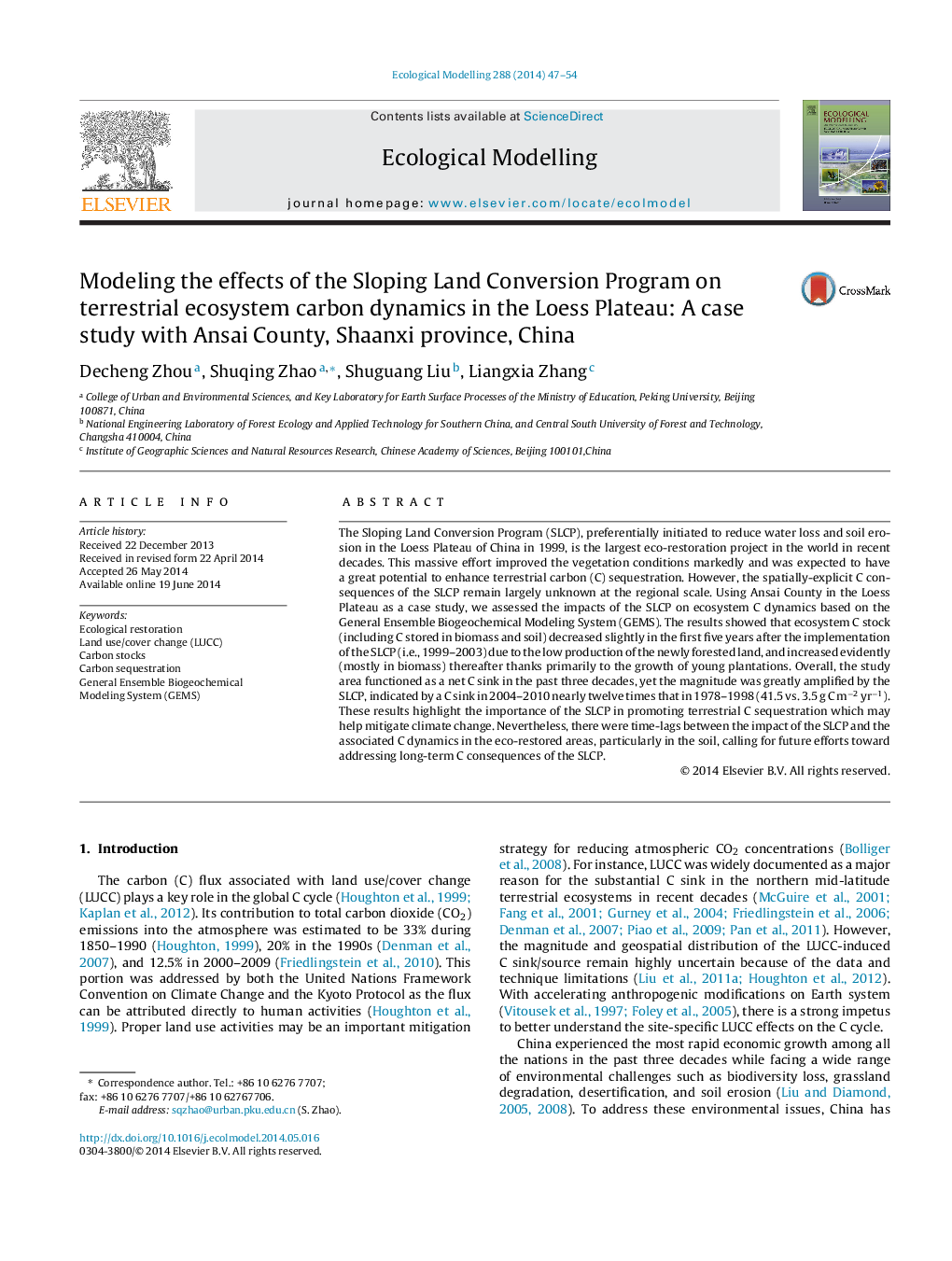| کد مقاله | کد نشریه | سال انتشار | مقاله انگلیسی | نسخه تمام متن |
|---|---|---|---|---|
| 4375897 | 1617458 | 2014 | 8 صفحه PDF | دانلود رایگان |

• The spatially-explicit carbon (C) consequences of the SLCP was simulated.
• The SLCP increased ecosystem C stocks remarkably after a slight decrease first.
• The SLCP enhanced the terrestrial C sequestration mainly in biomass at the early stage.
The Sloping Land Conversion Program (SLCP), preferentially initiated to reduce water loss and soil erosion in the Loess Plateau of China in 1999, is the largest eco-restoration project in the world in recent decades. This massive effort improved the vegetation conditions markedly and was expected to have a great potential to enhance terrestrial carbon (C) sequestration. However, the spatially-explicit C consequences of the SLCP remain largely unknown at the regional scale. Using Ansai County in the Loess Plateau as a case study, we assessed the impacts of the SLCP on ecosystem C dynamics based on the General Ensemble Biogeochemical Modeling System (GEMS). The results showed that ecosystem C stock (including C stored in biomass and soil) decreased slightly in the first five years after the implementation of the SLCP (i.e., 1999–2003) due to the low production of the newly forested land, and increased evidently (mostly in biomass) thereafter thanks primarily to the growth of young plantations. Overall, the study area functioned as a net C sink in the past three decades, yet the magnitude was greatly amplified by the SLCP, indicated by a C sink in 2004–2010 nearly twelve times that in 1978–1998 (41.5 vs. 3.5 g C m−2 yr−1). These results highlight the importance of the SLCP in promoting terrestrial C sequestration which may help mitigate climate change. Nevertheless, there were time-lags between the impact of the SLCP and the associated C dynamics in the eco-restored areas, particularly in the soil, calling for future efforts toward addressing long-term C consequences of the SLCP.
Journal: Ecological Modelling - Volume 288, 24 September 2014, Pages 47–54